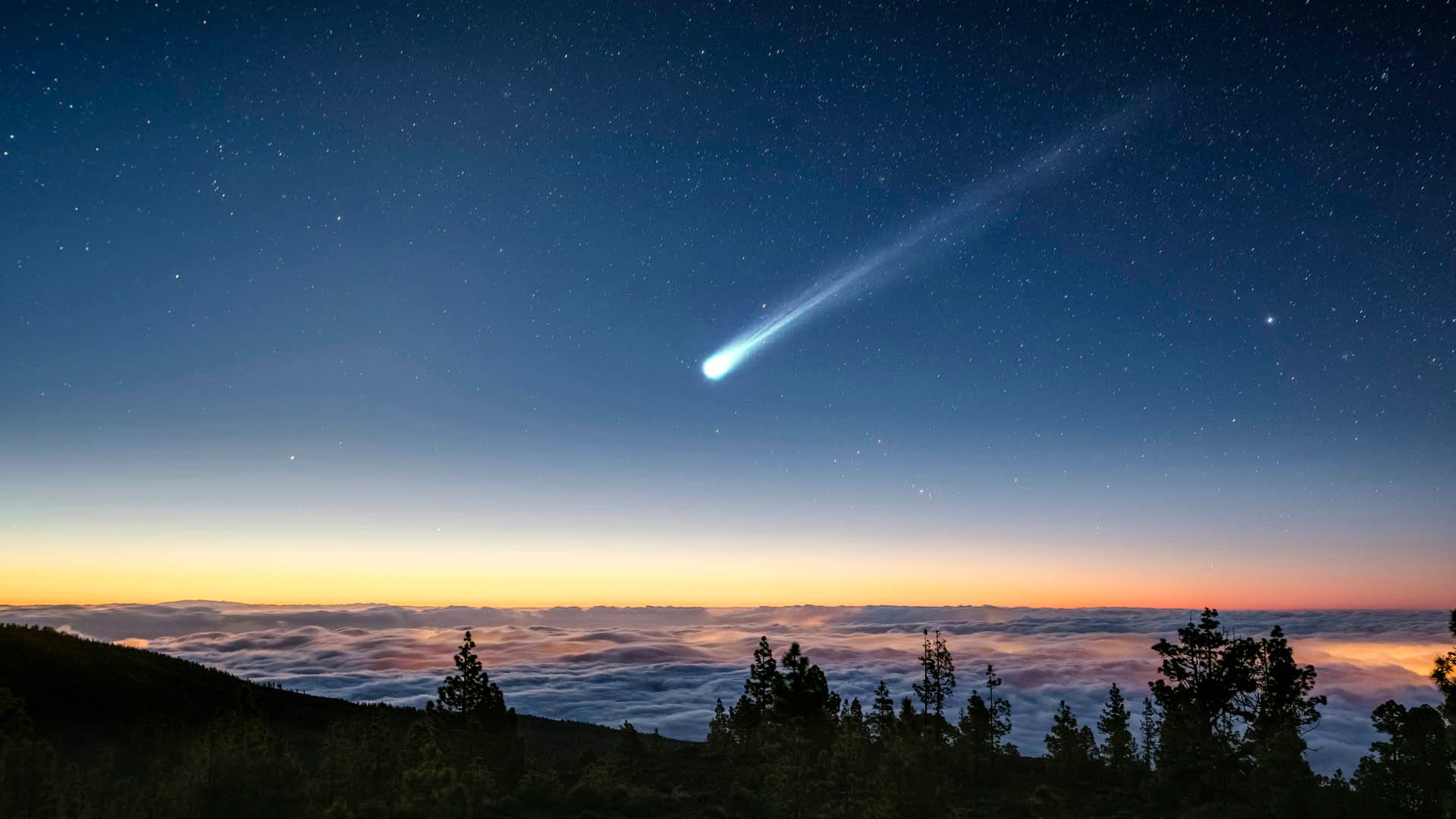Comets are celestial bodies composed primarily of ice, dust, and rock. They are often referred to as “dirty snowballs” due to their composition. Comets originate in the Kuiper Belt or the Oort Cloud, two regions at the edge of our solar system.
Formation of Comets
Comets are thought to have formed during the early stages of the solar system’s formation. As the solar system cooled, leftover material condensed into icy bodies that became comets.
The Anatomy of a Comet
A comet has three main parts:
- Nucleus: The solid core of a comet, composed of ice, dust, and rock.
- Coma: A cloud of gas and dust that surrounds the nucleus as it approaches the Sun.
- Tail: A long, luminous trail of gas and dust that extends behind the comet as it orbits the Sun.
Comets and Earth
Comets can pose a threat to Earth if they collide with our planet. However, the risk of a large comet impact is very low. The most famous comet impact in recent history was the Shoemaker-Levy 9 comet, which collided with Jupiter in 1994.
Famous Comets
Some of the most famous comets in history include:
- Halley’s Comet: This periodic comet has been observed for thousands of years. It returns to the inner solar system every 75-76 years.
- Comet Hale-Bopp: This comet was one of the brightest comets of the 20th century. It was visible to the naked eye for many months in 1997.
- Comet Hyakutake: This comet was discovered in 1996 and was visible to the naked eye for several months. It was one of the brightest comets of the 20th century.
The Importance of Comets
Comets are important for several reasons. They can provide clues about the formation of the solar system. They can also be used to study the composition of the early universe. Additionally, comets may have played a role in delivering water and organic molecules to Earth, which could have helped to spark the origin of life.
Comets are fascinating celestial objects that have captured the imagination of humans for centuries. As we continue to study these icy wanderers, we may gain new insights into the mysteries of our universe.
